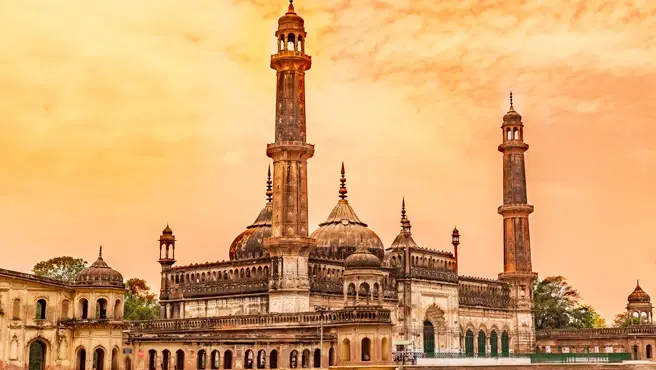
Hotels
•04 min read

Qutb Minar and its Monuments stand as a testament to India's rich history and architectural brilliance. This guide will help you plan a mesmerizing trip by revealing secrets of an ancient world. You will learn about historical details, nearby attractions, and simple travel tips. Let your journey into the past inspire your modern adventures.
The story of Qutb Minar and its Monuments begins with its builders. Qutbuddin Aibak initiated its construction. His successor, Shamsuddin Iltutmish, completed the towering minaret. Standing around 240 feet tall, Qutb Minar is celebrated as one of the tallest minarets in India. Its intricate carvings and detailed design elements show the skill of its creators.
The legacy of these early rulers lives on throughout the Qutb Complex. Their vision helped shape a monument that stands proudly among heritage sites around Qutb Minar. The work done on this structure inspires awe and offers a glimpse into early Indo-Islamic architecture.
Qutb Minar and its Monuments are recognized as a UNESCO World Heritage Site. This honor is reserved for sites with unique historical and cultural significance. The recognition underscores the importance of the minaret in Indo-Islamic architecture. It also ensures ongoing conservation efforts to maintain its legacy for future generations.
The complex is a treasure trove of history. The Quwwat-ul-Islam Mosque is the first mosque built in India and marks the beginning of a new era. Nearby, the Iron Pillar stands as a scientific and historical marvel. The Alai Darwaza and Alai Minar, built by Alauddin Khilji, further add to this architectural mosaic. Each structure contributes to a deeper understanding of the cultural and spiritual evolution of the area.
This historic area is brimming with sites that capture the imagination. The Tomb of Shams al-Din Iltutmish is a key site where history whispers through its ancient stones. Close by, the Tomb of Imam Zamin offers a quieter path for exploration, away from the usual crowds. Other monuments in the Qutb Complex, including Alauddin Khilji's tomb and madrasa, invite visitors to step into a bygone era.
Beyond the immediate complex, the region offers additional delights. Mehrauli Archaeological Park is a treasure trove of ruins and history waiting to be explored. The Jamali Kamali Mosque and Tomb is a hidden heritage site that offers a blissful retreat from ordinary travel. Rajon Ki Baoli, an ancient stepwell, provides a unique glimpse into the engineering feats of the past. These attractions are great complements to your journey at Qutb Minar.

Plan your visit during the cooler months to fully enjoy this iconic site. Early mornings or late afternoons are ideal. This timing helps you avoid the peak hours and large crowds. You can feel the charm of the place without feeling rushed.
Entry to Qutb Minar and its Monuments is affordable. Ticket prices differ for domestic and international tourists. The site is committed to inclusivity and is accessible for differently-abled visitors. This ensures that everyone can experience the wonder of this historical landmark.
Keep your camera ready and capture the best angles of the ancient architecture. Always respect the site and local customs as you take photos. It is wise to dress modestly and observe cultural norms. A respectful approach will leave you with an enriched experience and fond memories.
Finding a place to rest is simple. Qutb Minar nearby hotels offer comfort and convenience. Many of these establishments come with helpful amenities to enhance your stay. You can find options that match varying budgets and tastes.
There are lodging near Qutb Minar choices ideal for both families and solo travelers. The selection ranges from budget-friendly spots to more luxurious stays. This flexibility allows you to choose the best accommodation near Qutb Minar according to your needs. The area provides a calm retreat after a day steeped in history.
Pro Tip: Choose accommodations within walking distance of Qutb Minar for easy access and immersive experiences. Many hotels also offer guided tours to heritage sites, making your stay even more enriching.
Start your day early to explore Qutb Minar and its Monuments in-depth. In the morning, wander through the rich historical narratives of the Qutb Complex. In the afternoon, take time to visit nearby heritage sites. End your day with a relaxing evening at your accommodation or by dining at local restaurants. This itinerary brings together history, leisure, and exploration.

The site is well connected by public transport. A metro station is close by, making your journey easy and stress-free. For shorter distances, cabs and auto-rickshaws are widely available. The convenience of these options allows you to plan your trip with flexibility and ease.
Wear comfortable footwear and stay hydrated as you explore. Local guides offer deeper insights into Qutb Minar and its Monuments. However, self-guided tours allow for a personal pace. Weigh the pros and cons to choose the travel style that works best for you.
The Qutb Minar Complex includes the Quwwat-ul-Islam Mosque, Iron Pillar, Alai Darwaza, Alai Minar, and tombs of Shams al-Din Iltutmish and Alauddin Khilji.
No, but Qutb Minar is celebrated as a UNESCO World Heritage Site for its historical and architectural value.
Qutb Minar was initiated by Qutbuddin Aibak and later completed by Shamsuddin Iltutmish.
Qutb Minar stands approximately 240 feet tall.
It is located in Mehrauli, South Delhi, India.
The rich legacy of Qutb Minar and its Monuments offers a window into a fascinating era of history and art. Exploring this area allows you to connect with the past and experience the blend of multiple cultures. From the towering minaret built by historic rulers to the surrounding heritage sites, every corner of this destination tells a story. Travel tips, nearby hotels, and simple itineraries make planning your visit seamless. Embrace the journey and let the history of this magnificent region enrich your wanderlust.